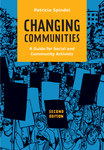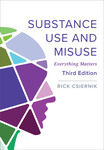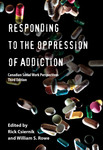We don’t actively support Internet Explorer
It appears that you are using Internet Explorer, which has been discontinued by Microsoft. Support has ended for versions older than 11, and as a result you may face security issues and other problems when using it.
We recommend upgrading to a newer browser such as Firefox, Google Chrome, or Edge for a much better experience across the web.
While this site may work with Explorer, we are not testing and verifying it, so you may run into some trouble or strange looking things.
The Essential Guide to Psychoactive Drugs in Canada, Second Edition
A Resource for Counselling Professionals
By Rick Csiernik
Overview
The second edition of the formerly titled Just Say Know: A Counsellor’s Guide to Psychoactive Drugs, this indispensable counselling resource provides a practical understanding of psychoactive drug pharmacology and physiology. Rick Csiernik unpacks the risks and therapeutic applications of the most commonly used and misused drug families, including depressants, stimulants, hallucinogens, and psychotherapeutics. This new edition features a wide range of updated research and content addressing the recent rise of opioid, fentanyl, cannabis, novel psychoactive substances, and antipsychotic medication use, as well as the impacts of drug use on sleep and mental health. Two new appendixes are featured summarizing the effects of drugs on pregnancy and interactions drugs may have with certain brain chemicals.
The Essential Guide to Psychoactive Drugs in Canada is the perfect addition to any addiction or mental health-related course. User-friendly and highly readable, this resource serves as a guide for service providers to deliver evidence-based care. This text is crucial for counsellors, therapists, instructors, and students looking to acquire an in-depth practical understanding of drug use, medication, and addiction in disciplines such as social work, sociology, pharmacology, health studies, nursing, psychology, and addiction studies.
FEATURES:
- includes quizzes, learning activities, and case studies
- features two new appendixes with additional learning materials
- uses accessible language suitable for second-year college and first-year undergraduate courses
Table of Contents
Preface
Chapter 1 Pharmacological Principles
1.1 Understanding Addiction
1.2 Psychoactive Drug Groups
1.3 The Costs of Psychoactive Drug Use
1.4 The Nervous System
1.5 Pharmacokinetics
1.6 Pharmacodynamics
1.7 Sleeping and Dreaming
Chapter 2 Depressants
2.1 Sedative-Hypnotics
2.2 Antihistamines
2.3 Inhalants, Solvents, and Anaesthetic Gases
2.4 Alcohol
2.5 Opioids
Chapter 3 Stimulants
3.1 Cocaine
3.2 Amphetamine and Methamphetamine
3.3 Methylphenidate (Ritalin and Concerta)
3.4 Anorexiants
3.5 Decongestants
3.6 Khat (Qat)
3.7 Methylendioxypyrovalerone (Bath Salts)
3.8 Betel/Areca Nut
3.9 Nicotine
3.10 Caffeine
Chapter 4 Hallucinogens
4.1 Hallucinogens
4.2 LSD-Like Hallucinogens: Indolealkylamine
4.3 Mescaline-Like Hallucinogens: Phenylethylamines
4.4 Dissociative Anaesthetics: Arylcycloalkylamines
4.5 Cannabis
4.6 Novel Psychoactive Substances
Chapter 5 Psychotherapeutic Agents
5.1 Antidepressants
5.2 Antipsychotics
5.3 Mood Stabilizers
Appendix A: Which Neurotransmitters Does a Psychoactive Drug Alter?
Appendix B: Summary of Effects of Psychoactive Drug Consumption During Pregnancy
References
Index






